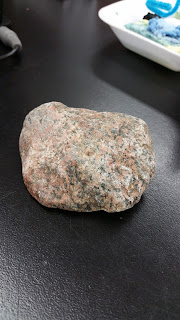__climate________ 1. Usually it is sunny in Florida.
__weather________ 2. This can change from day to day.
____climate______ 3. This can remain about the same over a number of years.
__weather________ 4. Conditions outside on a daily basis.
___climate_______ 5. The typical or usual conditions for an area.
_weather________ 6. Yesterday it was sunny but today we have storms.
__climate________ 7. Every year, we have mild winters and it rarely snows.
__climate________ 8. It is normal for New York to have a lot of snow each year.
__climate_______ 9. Florida is a popular vacation spot because of consistent sunny days and warm temperatures.
__weather________ 10. Our state is on tornado watch today.
| STUDENTS MAY THINK… INSTEAD OF THINKING… |
|
| The seasons cause the weather to change. Weather is a daily phenomenon | |
| Clouds form because cold air doesn’t hold as much water as warm air.
When
warm air rises, it expands and cools. Cool air can't hold as much water
vapor as warm air, so some of the vapor condenses onto tiny pieces of
dust that are floating in the air and forms a tiny droplet around each dust particle. When billions of these droplets come together they become a visible cloud.
|
|
| Clouds are made of water vapor. Ice crystals | |
| Clouds always predict rain. False. A day can just be cloudy with no rain. | |
| Raindrops look like tear drops. Raindrops start of as spheres in the upper atmosphere | |
| Rain falls when clouds become too heavy. Since warm air can hold more water than cool air, when the warmer air is cooled the moisture condenses to liquid - and it rains | |
| Rain falls because we need it. Rain falls to clemently factors has nothing to do with human desire or need. | |
| Lightning never strikes the same place twice. Lightening is a random event, the odds are low but not impossible. | |
| Thunder occurs when two clouds collide. thunder is caused my lightening. | |
| Air and oxygen are the same things. The air we breathe is a mixture that contains primarily oxygen and nitrogen. Oxygen is an element | |
| Humidity is moisture in the air. quantity representing the amount of water vapor in the atmosphere or a gas. | |
| Humid air is heavy or denser than dry air. it's water vapor that makes air humid, not actual drops of water. | |
| Hot air weighs less than cold air. Opposite, heat rises. | |
| The atmosphere is made up solely of air.Earth's atmosphere is 78% nitrogen, 21% oxygen, 0.9% argon, and 0.03% carbon dioxide with very small percentages of other elements. Our atmosphere also contains water vapor. In addition, Earth's atmosphere contains traces of dust particles, pollen, plant grains and other solid particles. | |
| Clouds block the wind and slow it down. clouds are not solid objects. | |
| Cold temperatures produce fast winds.Strong winds are due to a strong pressure gradient force. | |
| Snow and ice make it cold. it being cold results in snow and ice | |
| Cold days are caused by the clouds covering the sun.depends on the angle of the sun to the Earth | |
| Global Climate Change and the greenhouse effect are the same thing.
Global warming refers to a change in the Earth's climate that is causing it to heat up. The greenhouse effect, on the other hand, is a natural process that happens constantly, due to sunlight and the atmosphere.
|
|
| The greenhouse effect is bad and will eventually cause all living things to die. the greenhouse effect is naturally occurring, it is human interference that will cause everything to die. | |
| Ozone is bad (or that it is good).a layer in the earth's stratosphere at an altitude of about 6.2 miles (10 km) containing a high concentration of ozone, which absorbs most of the ultraviolet radiation reaching the earth from the sun. | |
| The ozone hole is a hole in the sky. a region of marked thinning of the ozone layer in high latitudes, chiefly in winter, attributed to the chemical action of chlorofluorcarbons and other atmospheric pollutants. The resulting increase in ultraviolet light at ground level gives rise to an increased risk of skin cancer. |















